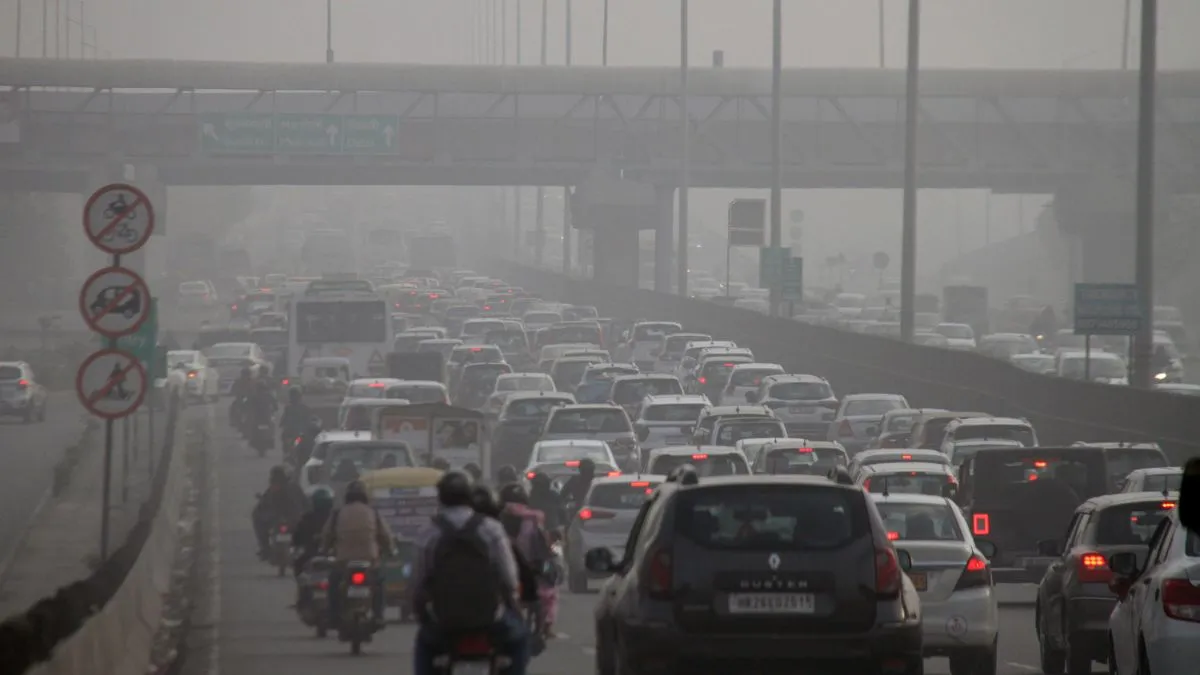Delhi’s air quality has taken a sharp downturn, rapidly deteriorating from poor to very poor conditions in a matter of days. The Central Pollution Control Board (CPCB) predicts no improvement in the coming three days, painting a bleak picture for residents of the national capital. This alarming trend underscores the ongoing struggle against air pollution in Delhi, a persistent challenge fueled by a complex interplay of local and regional factors. The rapid increase in the Air Quality Index (AQI), jumping from 230 to 285 within 24 hours, highlights the severity of the situation and emphasizes the urgent need for effective and sustained interventions. While seasonal factors like stubble burning contribute, the current spike appears primarily driven by localized sources. This necessitates a focused approach on immediate solutions to combat this immediate crisis and prevent further deterioration of public health.
Local Pollution Sources: The Primary Culprits
Vehicles, Industries, and Construction: A Deadly Trio
Delhi’s air pollution problem is largely homegrown. Vehicle emissions, industrial activities, and construction dust contribute significantly to the alarmingly high AQI levels. The sheer volume of vehicles on the city’s roads, coupled with a high percentage of older, less-efficient models, generates a considerable amount of pollutants. Industrial emissions, often unchecked or inadequately monitored, release harmful pollutants into the air, worsening the overall air quality. Construction activities further exacerbate the problem, generating substantial dust and particulate matter. These three sectors need targeted interventions and stricter enforcement of emission norms to see any meaningful reduction.
Ineffective Waste Management and Burning Practices: A Contributing Factor
Improper waste management practices contribute significantly to the city’s pollution levels. Open burning of garbage, often common in various parts of the city, directly releases harmful pollutants into the atmosphere. The lack of proper infrastructure and mechanisms for waste disposal intensifies this issue. In addition to the significant contribution of vehicular exhaust, unregulated small-scale industries operating within densely populated areas are often significant polluters. Lack of consistent monitoring and enforcement has created conditions where they continuously contribute harmful pollutants to the air.
Regional Factors: The Role of Stubble Burning
Reduced Stubble Burning Impact: Still a Concern
While the burning of agricultural stubble in neighboring states of Punjab and Haryana has been a major contributor to Delhi’s pollution in previous years, the CPCB suggests its influence is comparatively less significant in the current pollution spike. However, it does not mean the issue is solved. The ongoing debate and effort to reduce this pollution needs sustained efforts throughout the year. Improved agricultural practices, coupled with strict enforcement of regulations and effective monitoring, remain crucial to curtailing this source of pollution. This requires regional cooperation and collective efforts toward sustainable agricultural techniques that eliminate this issue.
Governmental Interventions and Mitigation Strategies
Emergency Measures and Long-Term Solutions
The Delhi government frequently implements emergency measures such as restrictions on construction activities and the movement of heavy vehicles during periods of severe pollution. These temporary measures provide short-term relief, but they do not solve the underlying problem. A longer-term perspective includes investing in more efficient public transportation, promoting the use of electric vehicles, and enforcing stricter environmental regulations on industrial units. This should be coupled with rigorous monitoring and effective enforcement measures to ensure adherence. The public participation with responsible waste disposal habits is essential for effectively addressing the issue. This will go a long way to creating long-term solutions for air pollution.
Public Awareness and Community Engagement
Engaging citizens plays a critical role. The promotion of public awareness regarding the harmful effects of air pollution, along with suggestions for protective measures and responsible practices, will substantially support government-led efforts. Promoting carpooling, cycling, and the use of public transportation are practical steps citizens can adopt in mitigation efforts. By emphasizing community-based initiatives for waste management and pollution reduction, governments and citizens work toward a more sustainable future. This combination will significantly contribute to solving this issue on a bigger scale.
Take Away Points
- Delhi’s air pollution levels are critically high, demanding urgent attention.
- Local pollution sources such as vehicles, industries, and construction are primary drivers of the current surge.
- While stubble burning from neighboring states contributes, its impact is relatively less significant than local factors currently.
- Effective interventions require a comprehensive approach involving stricter regulations, efficient waste management, promoting public awareness, and leveraging technological advancements for a cleaner environment. Consistent and sustainable strategies are crucial for long-term improvement.




